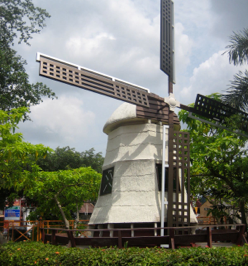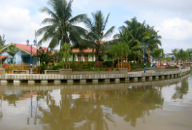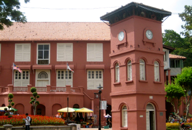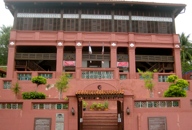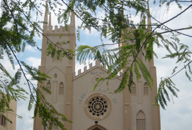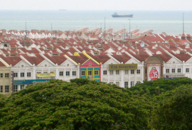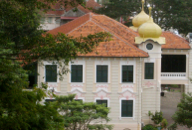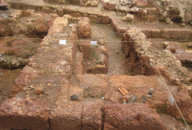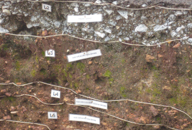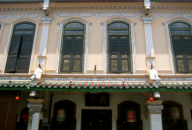Malacca/melaka
State of Malacca, southern peninsula,malaysia
February 25- March 1, 2009


Malacca/melaka
State of Malacca, southern peninsula,malaysia
February 25- March 1, 2009




Malacca is one of the most visited tourist destinations in Malaysia. Located on the west coast of peninsular Malaysia, on the Strait of Malacca and due east of the Indonesian country of Sumatra. The winds favored this city as a trading destination, with ships arriving from the east and the west. Trading with the Chinese, the Javanese, Arabians, Persians, Ethiopians, and other traders from Asia Minor brought great prosperity to Malacca in the 15th century, making it one of the world’s richest trading empires. The name Malacca/Melaka apparently has many sources, the most common legend being that it was derived from the local Malacca tree, named by a Sumatran Prince Parameswara in 1400. Another thought is that it may have been named by the Portuguese , derived from the the Andalusian Spanish port city of Malaga. The origin matters less than the history of the city. It fell to the Portuguese in 1511, then to the Dutch in 1641, and to the English in 1795. Each of these conquerers left remnants of its conquest, with the historic center of the city centered around St. Paul’s Hill. Malacca has a multi-ethnic population which includes the Baba-Noyas, descendants of early merchants from China who married local Malay women. Eurasians of Portuguese and Dutch decent are also counted among the locals. Henry and I spent 4 nights in Malacca, which gave us plenty of time to explore the city, plus time off to relax and indulge ourselves in a spa treatment at our hotel, another Spa Village spa, using the local Malaccan remedies of herbs and spices.
PHOTOS: Left Column: 1. View from our hotel room: Sentosa City, a village of houses built in the traditional style on land at the bend of the Sungai Melaka. 2. The seal of the city of Melaka (Malacca). 3. Stadthuys, a sturdy building as seen from the the front, with an enclosed porch above the porte couchère. This was built by the Dutch c. 1650 as the seat of their colonial government. 4. Townhouses between the base of St. Paul’s Hill and the sea. These have been built on landfill. The fort and administrative center would have formerly been on the waterfront, near the strait. 5. A colonial building with onion domes, formerly a British club with cricket grounds at the back. 6. An archeological dig of the wall of the Portuguese fort. The stone foundation was coral cut in blocks, taken from a nearby island. Center, Top: Christ Church, built by the Dutch in 1753 in celebration of their centenary of rule in Malacca. It was consecrated for Anglican worship in 1838 when the British ruled the city. The fountain in the gardens commemorating Queen Victoria’s Diamond Jubilee. Center, Middle: A remnant of the Dutch, their windmill. Center, Bottom: Porta de Santiago, the last remnant of the Portuguese “A’Famosa” fort. Right Column: 1. Kampung Morten, Sentosa Village from the opposite bank of the Malacca River. 2. Stadthuys, as seen from the center of the square, its formidable bulk looking very administrative. Dutch, c. 1650. The Clock Tower stands in the garden. 3. The Islamic Museum on Jalan Kota at the base of St. Paul’s Hill. 4. Church of St. Francis Xavier c. 1849, its construction initiated by a French priest. Branches of the Malacca tree in the foreground. 5. Baba-Nonya Heritage Museum, a grand home with opulent decor displaying the wealth and the lifestyle of the “Straits Chinese” or Peranakan community. 6. Detail, archaeological dig showing the laterite foundations of the Portuguese fort. A cross-section of the striations of soil are enumerated.

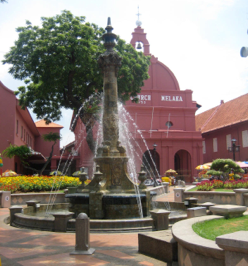
HERITAGE SITES
